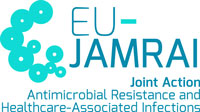Step by step guide for the implementation and assessment of On-line Discussion Forums
Online discussion forums are digital platforms that enable asynchronous (and sometimes synchronous) text-based or multimedia communication among professionals, designed to facilitate collaborative learning, knowledge sharing, peer-to-peer support, and problem-solving related to specific AMR/AMS topics, cases, or challenges. They can serve as a safe and accessible learning environment, fostering a community of learners and practitioners by allowing for reflective discussion and exchange of experiences.

Planning a On-line Discussion Forums
The following steps should be taken into consideration when planning an on-line discussion forum on AMR/AMS:
- Platform Selection and Setup: Choose a suitable platform (e.g., dedicated forum software, integrated feature within an LMS, private social media group like Facebook as described by Pisano et al. in Conway and Knighton (2017), or a structured digital case discussion platform (Asif & Bell, 2024). Ensure the platform is secure, user-friendly, and accessible to the target audience.
- Defining Purpose and Audience: Clearly define the forum’s objectives (e.g., discussing complex AMR cases, sharing best practices in AMS, journal club for new AMR research), target professional profiles, and key AMR/AMS themes.
- Moderation Strategy and Expert Engagement: Appoint skilled moderators, ideally experts in AMR/AMS (e.g., ID physicians, AMS pharmacists), to guide discussions, post engaging and relevant content (e.g., clinical case scenarios, recent journal articles, new guidelines, challenging questions), stimulate critical thinking, provide evidence-based feedback, and ensure a respectful and constructive environment. (Asif and Bell, 2024, emphasize expert moderation and feedback in digital case discussions; Conway and Knighton, 2017, mention ID physician-led case presentations).
- Content Seeding and Structuring Discussions: Initiate discussions with high-quality, relevant prompts. Structure forums around specific topics, clinical cases (Asif & Bell, 2024), problem-based learning scenarios, or journal articles to provide focus. Consider using interactive elements like polls within the forum to gauge initial opinions or understanding before expert input. (Asif & Bell, 2024; Conway & Knighton, 2017).
- Promoting Active Participation and Peer Learning: Encourage active and regular contributions from all members. Foster an environment where participants feel comfortable sharing experiences, asking questions (even basic ones), offering peer-to-peer feedback, and discussing local challenges and solutions related to AMR/AMS.
- Resource Curation and Archiving: Maintain a repository of valuable discussion threads, expert answers, shared resources (guidelines, articles, tools), and summaries of key learning points for easy future reference by the community.

Defining roles in a On-line Discussion Forums
Facilitator’s role (Moderator): Go beyond basic moderation to act as an expert guide and mentor within the forum. This includes preparing and posting engaging case-based or topic-based discussion starters, posing Socratic questions to stimulate deeper thinking, providing timely and evidence-based responses to queries, correcting misconceptions respectfully, synthesizing complex discussions into key learning points, and fostering a vibrant and supportive learning community (role described in Asif and Bell, 2024). It is also desirable to demonstrate openness to diverse perspectives and to engage constructively with challenging or unresolved questions in the field.
Participant’s role: Regularly access the forum, actively contribute by posting thoughtful questions, sharing relevant professional experiences and insights related to AMR/AMS, engaging constructively with peers’ posts, reflecting on the discussions and expert feedback, and applying learned concepts to their practice. Respect diverse viewpoints and adhere to community guidelines.

Assessing a On-line Discussion Forums
Methods
- Quantitative and qualitative analysis of participation (e.g., frequency, length, and quality of posts, depth of interaction).
- Thematic analysis of discussion content to identify areas of learning, common misconceptions, or emerging issues in AMR/AMS practice.
- Pre- and post-forum surveys to assess changes in knowledge, clinical reasoning skills, confidence, and attitudes related to AMS. (Asif and Bell, 2024, demonstrated significant improvements in these areas with digital case discussions).
- Participant feedback on the forum’s usability, the quality of moderation and discussion, perceived learning value, and impact on their practice.
- Assessment of problem-solving or clinical reasoning skills demonstrated in responses to case-based scenarios posted on the forum.
Tools
Forum analytics (built-in or third-party), content analysis software (e.g., for thematic analysis), validated questionnaires for knowledge and confidence, rubrics for assessing the quality of participation or case analyses, peer feedback mechanisms within the platform, user satisfaction surveys.

Suggested On-line Discussion Forums prototype
Target Audience: Legislators and Authorities (as observers for policy insights), Antimicrobial Manufacturers (for industry perspectives/challenges), Health Managers, Prescribers, Dispensers, Researchers, Educators.
Learning Objectives:
- Improve participants’ clinical reasoning and decision-making skills in managing complex or ambiguous AMR-related cases.
- Facilitate interprofessional learning and understanding of different perspectives on challenging AMR/AMS scenarios.
- Provide a platform for timely discussion of emerging AMR issues, new guidelines, or controversial topics in stewardship.
- Build a supportive online community for ongoing professional development in AMR/AMS.
Curriculum/Activities:
- Weekly or bi-weekly posting of a new, anonymized AMR “Clinical Conundrum” (a challenging case study) by an expert moderator (e.g., an ID physician or AMS pharmacist). Cases could cover diagnostic dilemmas, treatment failures, management of multi-drug resistant organisms, or ethical issues in AMS.
- Participants are invited to discuss their approach, diagnostic considerations, and potential management strategies, justifying their reasoning. Interactive polls could be used to gauge initial responses to specific questions within the case (Asif & Bell, 2024).
- Moderators facilitate the discussion, provide evidence-based insights, highlight key learning points, and summarize best practices at the end of each case discussion period.
- Dedicated threads for “Ask the AMR Expert” sessions or for sharing and discussing recent impactful journal articles related to AMR/AMS (adapting the social media journal club, concept from Conway and Knighton, 2017).
- Opportunities for participants to submit their own challenging cases for discussion (moderator-vetted).
Evaluation of the Prototype’s Effectiveness:
- Analysis of participant engagement metrics (e.g., number of posts, replies, active users).
- Qualitative analysis of discussion threads for evidence of critical thinking, collaborative problem-solving, and application of AMS principles.
- Pre- and post-participation surveys measuring changes in confidence in managing complex AMR cases and self-reported improvements in clinical reasoning (Asif & Bell, 2024).
- User satisfaction surveys focused on the quality of clinical cases, the relevance of information shared, the effectiveness of moderation, the value of peer interactions, and the overall learning experience.
References
- Armas Freire, P. I., Gaspar, G. G., Zurita, J., Salazar, G., Velez, J. W., & Bollela, V. R. (2022E-Learning versus Face-to-Face Methodology for Learning Antimicrobial Resistance and Prescription Practice in a Tertiary Hospital of a Middle-Income Country. Antibiotics, 11(12), 1829. https://doi.org/10.3390/antibiotics11121829
- Asif, Q., & Bell, K. (2024). Digital case discussion provides effective education on anti-microbial resistance in low- and middle-income countries. Future Healthcare Journal, 11, 100032. https://doi.org/10.1016/j.fhj.2024.100032
- Conway, L. J., & Knighton, S. C. (2017). Journal club: Social media as an antimicrobial stewardship tool. American Journal of Infection Control, 45(3), 293–294. https://doi.org/10.1016/j.ajic.2016.11.023
- Crovato, S., Menegon, F., Mascarello, G., Pinto, A., Nadin, A., Piovan, G., Ricaldi, G., Di Martino, G., & Pozza, G. (2023). Development of a Training Strategy Aimed at Increasing Veterinarians’ Awareness of the Proper Use of Antibiotics on Rabbit Farms. Animals, 13(15), 2411. https://doi.org/10.3390/ani13152411
- Hulth, A., Lofmark, S., Andre, J., Chorney, R., Cohn, E., Ellen, M., Davidovitch, N., Moran-Gilad, J., Greer, A., Fishman, D., Brownstein, J., & MacFadden, D. (2019). A Tool for Promoting Responsible Antibiotic Prescribing across Settings and Sectors. Online Journal of Public Health Informatics, 11(1), e62445. https://doi.org/10.5210/ojphi.v11i1.9781
- MacDougall, C., Schwartz, B. S., Kim, L., Nanamori, M., Shekarchian, S., & Chin-Hong, P. V. (2017 An Interprofessional Curriculum on Antimicrobial Stewardship Improves Knowledge and Attitudes Toward Appropriate Antimicrobial Use and Collaboration. Open Forum Infectious Diseases, 4(1), ofw225. https://doi.org/10.1093/ofid/ofw225
- Norris, J., Heller, J., Gibson, J., Hardefeldt, L., Hyndman, T., Nielsen, T., Ward, M., Govendir, M., Chambers, J., Browning, G., Wingett, K., & Britton, S. (2019). Development of a veterinary antimicrobial stewardship online training program for Australian veterinarians: A national collaborative effort. Australian Veterinary Journal, 97(8), 290–291. https://doi.org/10.1111/avj.12821
- Rocha-Pereira, N., Lafferty, N., & Nathwani, D. (2015). Educating healthcare professionals in antimicrobial stewardship: Can online-learning solutions help? Journal of Antimicrobial Chemotherapy, 70(12), 3175–3177. https://doi.org/10.1093/jac/dkv336
- Rogers Van Katwyk, S., Jones, S. L., & Hoffman, S. J. (2018). Mapping educational opportunities for healthcare workers on antimicrobial resistance and stewardship around the world. Human Resources for Health, 16(9). https://doi.org/10.1186/s12960-018-0270-3
